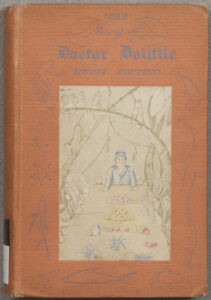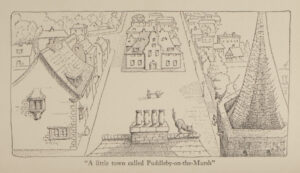Hugh Lofting’s Doctor Dolittle series, starting with the first book published in 1920, quickly became a beloved staple in children’s literature. For decades, its popularity rivaled even Alice’s Adventures in Wonderland. While its place as a classic was secure, the original Doctor Dolittle story has gradually become less known, especially in its original form. Many today are more familiar with the Eddie Murphy film adaptations, which bear little resemblance to Lofting’s book.
For those unfamiliar with the original narrative, The Story Of Doctor Dolittle centers on an English physician who gains the extraordinary ability to speak with animals. This newfound skill leads him to abandon human medicine in favor of veterinary practice. His adventures take him across the sea to Africa to combat a monkey epidemic. There, he faces imprisonment and daring escapes, successfully vaccinates the monkey population, and even controversially bleaches the skin of an African prince as a favor. His journey home is fraught with encounters with pirates and a stint traveling with a circus, making for a truly eventful tale.
 The cover of the 1920 first edition of The Story of Doctor Dolittle by Hugh Lofting, showcasing the book's original publication year and author.
The cover of the 1920 first edition of The Story of Doctor Dolittle by Hugh Lofting, showcasing the book's original publication year and author.
The element of skin bleaching in the story of Doctor Dolittle often raises eyebrows, and rightly so. The initial editions of the book contain plot points now recognized as racially insensitive, reflecting the prevalent, though now outdated, British colonial mindset of the early 20th century. While the book overtly condemns slavery and criticizes European exploitation in Africa, certain aspects, such as the character of Prince Bumpo who desires to alter his appearance to win Sleeping Beauty’s affection, are undeniably products of their time. It’s important to note that Doctor Dolittle only reluctantly agrees to Prince Bumpo’s request after much hesitation.
These problematic elements led to the book falling out of favor with audiences in the 1960s and 70s. Edited versions began to emerge, with offensive language and plot details being revised or completely removed. In 1986, a centennial edition honoring Hugh Lofting was released, significantly altered under the guidance of his son, Christopher Lofting.
 An illustration from the original edition of Doctor Dolittle, depicting a scene from Hugh Lofting's classic children's book.
An illustration from the original edition of Doctor Dolittle, depicting a scene from Hugh Lofting's classic children's book.
Christopher Lofting believed that his father, had he been aware of the potential offense his work might cause, “would have been the first to make the changes himself.” He maintained that the changes were “minor enough not to interfere with the style and spirit of the original.” Even today, censored editions are still in circulation, while original versions are readily accessible through digital platforms.
Interestingly, the story of Doctor Dolittle has a connection to MIT. Hugh Lofting himself was a student at the prestigious institution in the early 1900s, studying civil engineering as a practical backup to his literary aspirations. MIT acquired a copy of Doctor Dolittle in 1948, likely as a tribute to Lofting following his death the previous year.
Despite its controversies, the story of Doctor Dolittle remains a significant work in children’s literature. It offers a window into the values and biases of its time, prompting important discussions about representation and censorship in literature, even as it continues to enchant readers with its imaginative tale of animal communication and adventure.
